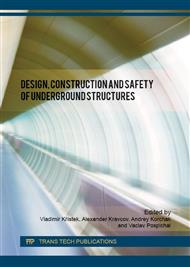p.65
p.72
p.81
p.87
p.93
p.103
p.111
p.118
p.125
Environment Effects - Dust Pollution and Soil Protection
Abstract:
Human activities have a considerable effect upon the development of all components of the natural environment. The activity of construction represents a considerable influence upon the environment, with its significance growing with the rate of urbanisation. The high concentration of people in cities and towns has resulted in this urban environment representing the living community for over 50 percent of the population. Construction based activities not only provide material conditions for an urban population, but also influence its social behaviour. As such, no civil engineering designs are able to ignore the influences or impacts which structures may have on the environment especially dust pollution and erosion of soil that is one of the principal resources of the biosphere. As a limited and irreplaceable natural resource it becomes the limiting factor of the development of society in case of its destruction or degradation. By being the living space of most plants it enables energy transformation in the framework of the ecosystem by way of the autothropic stratum represented by the green vegetation. Organic matter produced on the soil serves in numerous ways, whether directly or indirectly, the needs of man. Also the subsoil water runoff depends on soil properties. The loss of soil transforms the subsoil water runoff into surface water runoff with all negative consequences of such transformation.
Info:
Periodical:
Pages:
111-117
Citation:
Online since:
July 2016
Authors:
Keywords:
Price:
Сopyright:
© 2016 Trans Tech Publications Ltd. All Rights Reserved
Share:
Citation:


